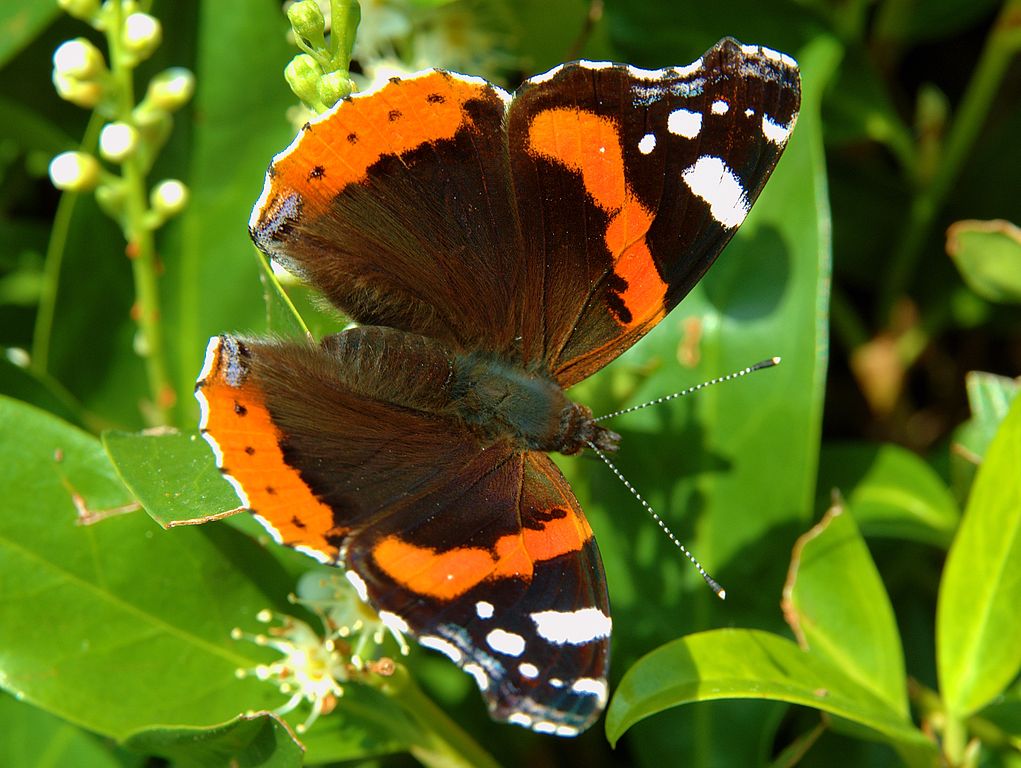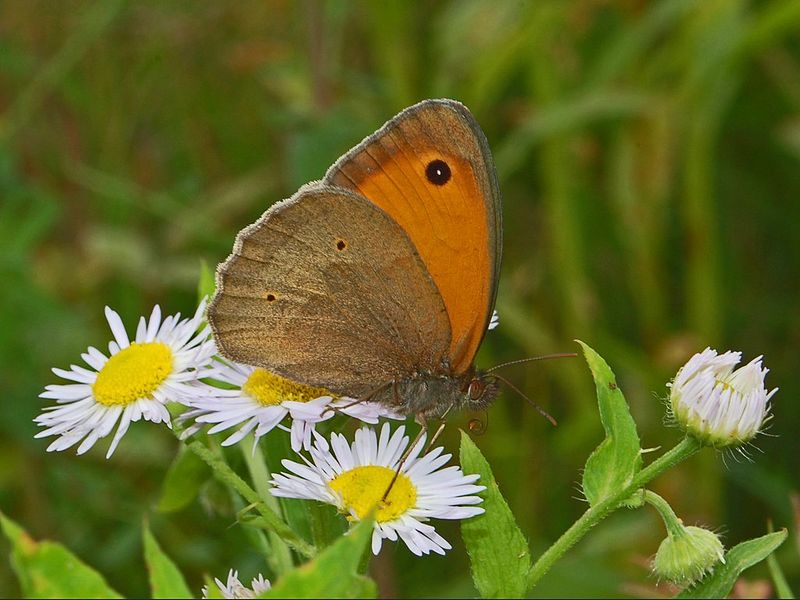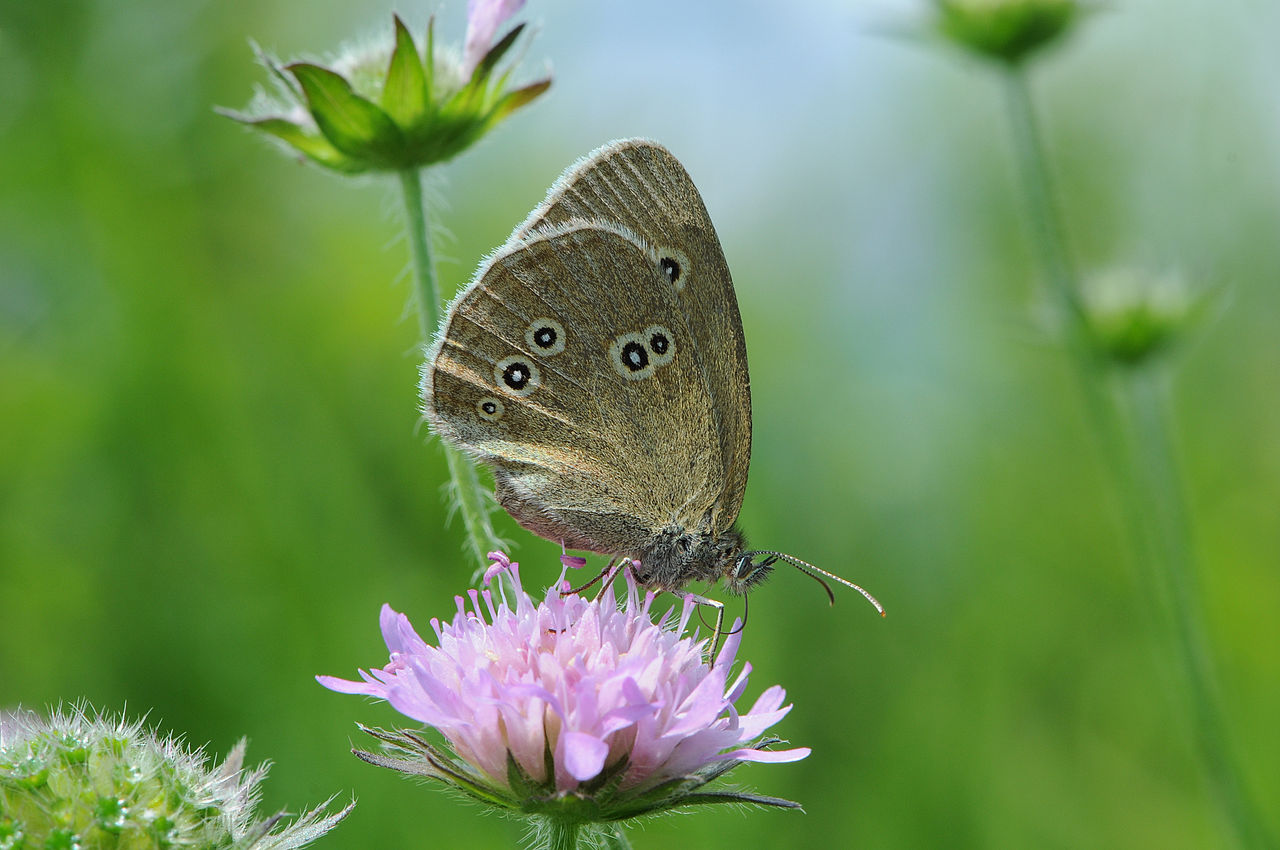A Red Admiral
Peter Martin writes:
The bad weather during June, July and August of 2011 hit the butterfly population badly and, with the cold, wet and cloudy weather through April, May and June and the first half of July this year, some of the species next year could find their numbers at dangerous levels.
To fly, all butterflies need solar power and, if there is lack of sunshine, they cannot spread their wings and soak up the sun’s rays to enable them to mate and reproduce.
To see how badly they have been affected at Fleet Pond, I visited some of the areas referred to previously on a sunny Sunday (22nd July). The temperature reached 26C for the first time for a while and I was quite shocked at how low the numbers were!
I started my trek from the new (old) bridge at Wood Lane and, on the Wet Heath, I only saw two butterflies: a Meadow Brown and a Large White.
A Meadow Brown
As I went along the path towards the field on Ministry of Defence land, where I had seen plenty of butterflies of various species in the past, I saw only 3 Ringlets.
Part of the reason for such a dearth could have been the height that the trees and bushes had reached either side of the path since my last visit. There were very few places reached by the sun to encourage the nectar-producing flowers that used to be there.
A Ringlet
The Field was more promising, as I recorded five species there. There were 10 Ringlets, 2 Large Whites, 5 Large Skippers and 4 Small Skippers.
Although their numbers were all down, the bright spot was seeing 61 Meadow Browns along the edge of the field. If I had walked the whole field, the number would probably have been in hundreds. Strangely, wet conditions seem to favour Meadow Browns. They normally vary considerably in colouring from pale brown to almost black most years, but this year, the majority seemed to be very dark.
I went on the islands in the Car Park, where reasonable numbers of butterflies were seen in the past but only 2 Gatekeepers and I Meadow Brown were recorded there.
It was my intention to go into the area between the path and the railway (opposite the Dry Heath) after that, but I was aghast to find how overgrown with trees and bushes it had now become. As well as other species, I had recorded up to 30 Gatekeepers there previously, so you can probably understand my disappointment at saying that the number seen on this occasion was nil.
On the Dry Heath, I saw 1 Red Admiral, 2 Meadow Browns and 1 Gatekeeper. One of the Meadow Browns and the Gatekeeper kept flying round and round each other. Perhaps numbers were so sparse that they were both thinking of trying to mate with another species!
There is concern nationally about some butterfly species reaching near extinction levels in 2013. It is, therefore, very important to bring sunshine into what are currently dark and overgrown areas and we can all plant more nectar-providing plants in sunny spots in our gardens.
Comment: Peter has previously written a very popular series of articles on the butterflies that can be seen at the Pond – see here.
All picture credits: Wikipedia.



